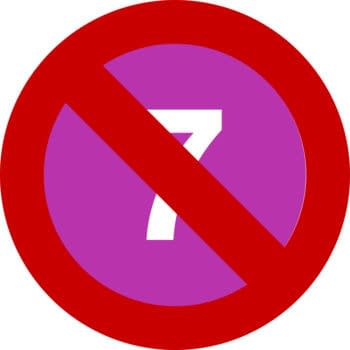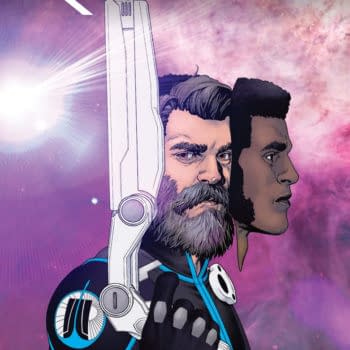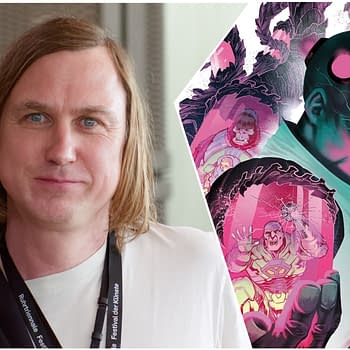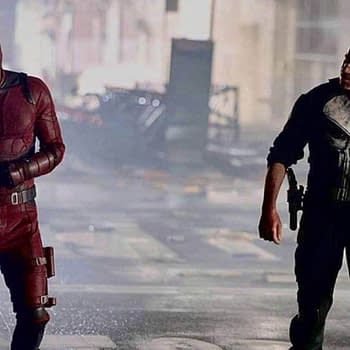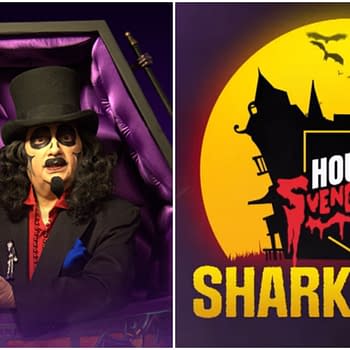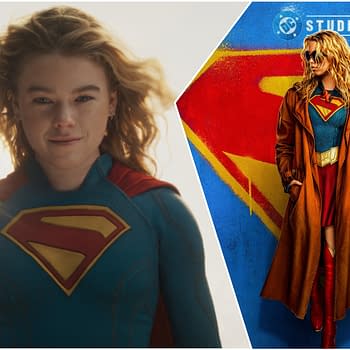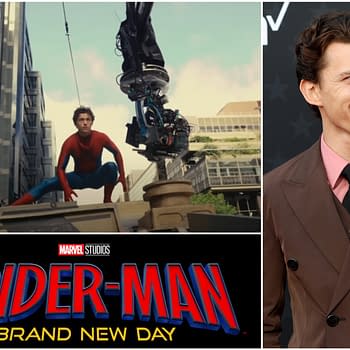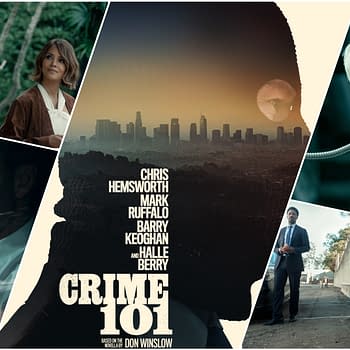Posted in: Movies, Recent Updates | Tagged: adi tantimedh, Adisakdi Tantimedh, Angela Asher, Bob Lackie, canada, Canadian, Cara Gee, Clara Pasieka, fantasy, Inhuman Condition, IPF, Kotex, look it moves, sci-fi, science fiction, Shaftesbury, Shaftesbury/Smokebomb, Shaun Benson, Smokebomb, Steph Ouaknine, The Independent Production Fund, The SyFy Channel, Thomas Olajide, Torri Higginson
Dangerous Others – An Interview with Inhuman Condition Producer Steph Ouaknine – Look! It Moves! By Adi Tantimedh
Adi Tantimedh writes:

The series serves as an allegory for the Otherness and LGBT issues the way the X-Men and many Science Fiction and Fantasy series do, and, produced on a low budget, depends on the writing and performances more than special effects and action set pieces. Each brief episode is a chamber piece as Kessler interacts with her patients in a fraught session as things escalate threaten to escalate out of control. The series fits the current model for internet binge-streaming.
I interviewed Shaftesbury/Smokebomb producer Steph Ouaknine to talk about the dynamics of producing a thematically ambitious webseries in Canada.
How did the idea for Inhuman Condition come about, and how did you become attached as producer?
I met Bob Lackie, the creator/writer a couple years ago, and he had actually already written a full first season of 14 episodes. We loved the concept and its execution: simple, contained, yet extremely powerful and poignant. We optioned it back in 2012 and it's evolved so much since then. The final version has new characters – like Linc – as well as a much more mature political worldview, and acute sensitivity to topics such as systemic racism and metaphors through sci-fi.
Bob has grown so much as a writer, and we had the benefit of time on our side to flesh out the series, as well as excellent input from my fellow producer Melanie Windle, our director Jared Pelletier, and all the actors on their arcs.
Was the plan always to produce it as a web series?
Yes. It almost became a six-part mini digital web series. When we finally got to make the season, we fleshed it out into a 33-episode arc for our YouTube channel KindaTV.
There's a marked contrast between Inhuman Condition and Carmilla, though they have shared certain themes involving LGBT representation and a female and feminist point of view. Carmilla feels aimed at a younger audience while Inhuman Condition comes from the perspective of the psychiatrist played by Torri Higginson. Did you feel as a producer that you wanted to have that range in the "Science Fiction and Fantasy as social and political metaphor" approach?
That's an interesting question – they are indeed worlds apart where tone is concerned. Where Carmilla sees the humour and optimism in the end of the world, Inhuman is almost pessimistic at its core and certainly not funny. It's not escapist, and the metaphors are uncomfortably close to home. However, both the characters Laura Hollis (from Carmilla) and Michelle Kessler (Inhuman) strive to do their best to help, and have big hearts – even if they stumble along the way. Allowing them both to make mistakes and recognize their privilege is why I love their respective arcs so much. Sci-fi allows you to explore societal metaphors with a certain freedom that you don't get from being literal.
How different was it to produce compared to producing Carmilla?
Insanely different! It's both easier and harder to produce Inhuman. Easier because we don't have to nail the entire episode in a single, one-angle take like we do with Carmilla, but at the same time, the darker, more earnest and less "joke-y" tone is harder to nail. It's a fine line: being poignant, but not irritatingly preachy or melodramatic. We had the luxury of working with established and talented actors like Torri Higginson, Shaun Benson, Angela Asher, Cara Gee, Clara Pasieka and supernaturally (!) talented newcomers like Thomas Olajide. They gave it their all and elevated the material.
Both Inhuman Condition and Carmilla were shot in 5 days, which is another challenge entirely!
What were the differences in financing Carmilla and Inhuman Condition?
Carmilla is fully funded by a brand, U by Kotex, while Inhuman Condition is a combination of a national fund we were lucky to be selected for, The Independent Production Fund (IPF) as well as investment from our company, Shaftesbury/Smokebomb. The IPF boosts dramatic digital series in Canada, and we were thrilled to work with them.
The more thoughtful approach to Science Fiction and Fantasy as metaphor strikes me as very Canadian. Canada is seeing a lot of that type of genre and Science Fiction television shows with that mindset right now, many of them co-funded by The SyFy Channel, like Lost Girl, Killjoys and Continuum. There's a more socially aware view of gender, race, class and politics. Do you feel it's something in the water? (Kidding) Or that there's a particularly nuanced approach to Science Fiction and Fantasy television something that Canadian writers and producers have become conscientious about?
There certainly is a wave of feminist, politically aware and fandom-savvy sci-fi being produced in Canada: most notably Orphan Black, Lost Girl and its spiritual successor Wynonna Earp, Killjoys, Dark Matter and Continuum.
Our POV as Canadian creators is certainly felt, I feel, where confrontation and morality is shown on screen. In Flashpoint (a Canadian series that also ran in the US) the policemen didn't have guns, and there'd be long, tense standoffs where they simply talk their way out of a hostage situation, for instance. I agree that what's "Canadian" is not the references to location or stereotypes, but the way characters – including Dr. Michelle Kessler in Inhuman – tackle conflict, systemic racism, gender roles and moral ambiguity.
I myself am always attracted to feminist-slanted sci-fi, so I'm happy we contributed to that genre. To answer your question… yes, it's definitely something in the water!
So is Inhuman Condition a one-season story or will there be more?
We're exploring options to continue the story. Stay tuned!
You can watch Inhuman Condition on the Kinda TV YouTube Channel:
Inhumanly slow at lookitmoves@gmail.com
Follow the official LOOK! IT MOVES! twitter feed at http://twitter.com/lookitmoves for thoughts and snark on media and pop culture, stuff for future columns and stuff I may never spend a whole column writing about.
Look! It Moves! © Adisakdi Tantimedh







